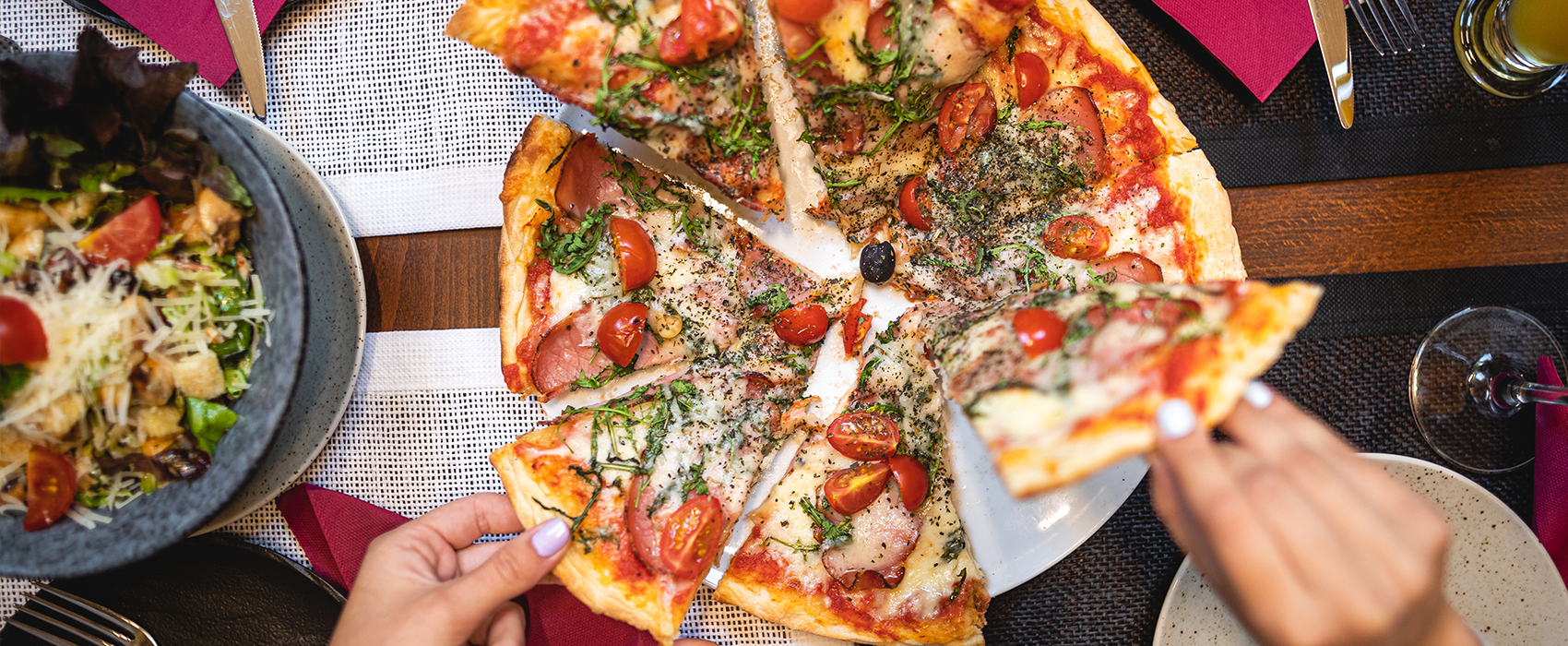All too often, we eat whatever is put on the plate in front of us, without thinking about the amount of food we are consuming. Research has shown that people consistently eat more food when offered larger portions.
Overeating can stem from boredom, emotions or simply being presented with a wide selection of food. It is imperative that we consider these triggers when thinking about food, to help monitor our portion sizes.
Eating adequately, but not excessively, can ward off and control the onset of various debilitating diseases such as hypertensive disorders, diabetes, weight gain and unintentional weight loss.
- What is portion size?
Portion size is defined as the amount food that you have at a given time, such as a meal or snack. - What is serving size?
Serving size is a unit of measure that describes the recommended amount of a certain food.
Portion sizes
Portion sizes of many foods have increased significantly over the past 2 decades, including that of foods sold for immediate consumption, which often far exceed recommended serving sizes.
Our perception of what a serving size should be has been altered by the increasing availability and marketing of larger food portions. Larger portions are now offered all around us, including restaurants, vending machines, packaged foods and fast-food. Meal combos or extra-value meals have become increasingly popular - as fast-food chains offer more food for only a slight increase in cost, encouraging people to eat more because they’re getting better value for money. On average, for only 30-50pence more, a fast-food meal is supersized by as much as 400 calories.
Serving size matters because the portion of food you have, directly affects consumption. Research shows that people often eat the amount of food in front of them and consume on average 30% more energy when offered larger portions.
Factors that cause people to eat more than what they need to, include:
- Food availability e.g. in restaurant & supermarkets
- Larger portion sizes
- As a result, calorie consumption tends to increase over a short period of time.
- Becomes harder for individuals to accurately assess how much they are eating.
- Food advertising and branding e.g. subjected to continues advert about food
- Restaurant and business layout
- Choosing foods with high energy density e.g. processed foods
- Alcohol consumption.
What does an ideal portion size look like?
- Around half the plate should consist of vegetables and salad
- One quarter should contain good quality protein
- The remaining quarter should contain complex carbohydrates and a small serving of healthy fats.
Tips for portion control:
- Use portion-controlled template (½ vegetables & salad, ¼ good quality protein; ¼ complex carbohydrates)
- Split an entrée/starter between two
- With leftover, ask for the remains to be put in a carry-out container
- Divide contents of large packages into smaller containers
- Consuming low calorie dense food
- Serve reasonable portions on individual plates
- Keep excess food out of reach, preventing inadvertent overeating
- Monitor you snacks – by putting a measured/set amount in a bowl or container for easy access.
- Use snack, like a piece of fruit or a small salad, if you feel hungry between meals to avoid overeating during the meal
- Try to avoid eating or snaking in front of the TV, as it is easy to overeat when a person’s attention is focused on something else
- Replace sweet jars with a fruit bowl
- Put tempting foods out of sight and put healthy foods in easy to reach places.
Food labelling and how it works
When buying or ordering food, there are five key points you should look for on the label or menu:
- Energy - The terms ‘kJ’ and ‘kcal’ (calories) tell you how much energy is in a product. Women need an average of 2,000 kcal a day and men need 2,500 kcal on average.
- Saturates - Saturates is another word for saturated fat. This section tells you about the amount of saturated fat in the product.
- Salt - Most adults eat more salt than the recommended maximum of 6g a day, increasing their risk of high blood pressure. You may see ‘sodium' listed rather than salt. To convert sodium into salt, multiply the amount on the label by 2.5.
- Reference Intake - has replaced the recommended daily amount (RDA). You might also see it written as RI. Reference intakes are useful guidelines on the amount of energy and nutrients you need for a healthy balanced diet each day. The %RI tells you how much of your daily healthy maximum is in the portion of the product.
- Serving / portion size – The portion size on the pack is the manufacturer's recommendation for one portion of the product. The %RI is worked out based on this portion size. Some packs also show the amount of each nutrient in 100g of the product. This will be given in grams or millilitres. A manufacturer's idea of a portion size might be smaller than yours, which means that even if a product looks healthy, if you have more than this portion amount, you may end up consuming more calories, saturated fat or salt than you realise.
References:

